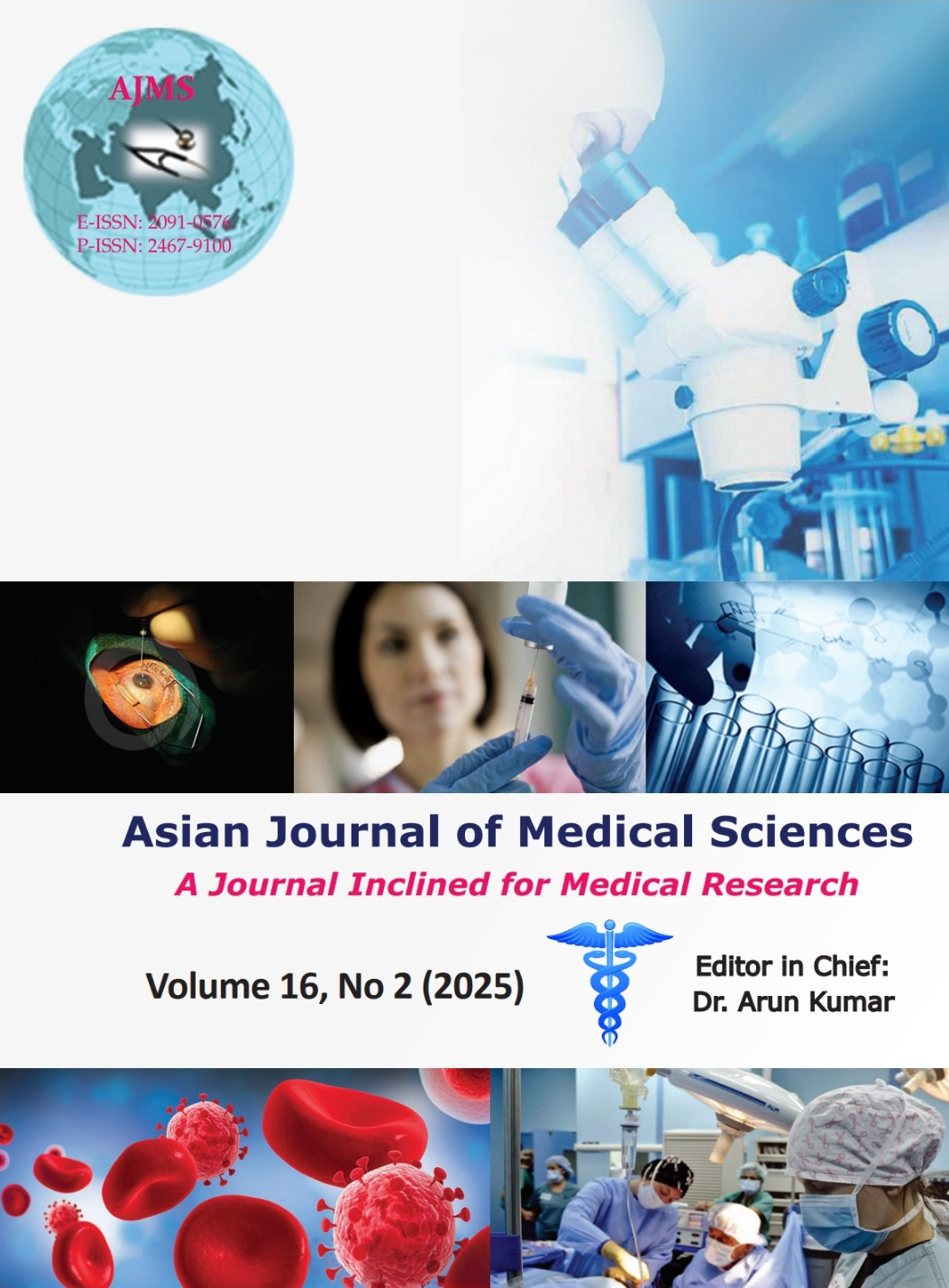Correlation of irisin with lipid profile in type 2 diabetes mellitus
Keywords:
Diabetes; Irisin; Lipid profileAbstract
Background: Irisin, a novel adipo-myokine, improves insulin sensitivity by browning of white adipose tissue and also promotes pancreatic β-cell proliferation. Irisin was seen to have great therapeutic potential in treating type 2 diabetes mellitus (T2DM) patients.
Aims and Objectives: Our study aimed to estimate the levels of serum irisin, lipid profile, and fasting blood sugar (FBS) in T2DM cases and healthy controls and to find any correlation among them.
Materials and Methods: We conducted a case–control study on 40 T2DM patients and 40 healthy controls. Enzyme-linked immunosorbent assay was employed for the estimation of serum irisin level, estimation of FBS by glucose oxidase-phenol 4 amino phenazone method (GOD/PAP), and lipid profile by enzymatic colorimetric method.
Results: Irisin was found to be lesser (P=0.00) in T2DM cases (14.5±8.6 ng/mL) as compared to controls (28.4±3.9 ng/mL). In T2DM cases, serum irisin was inversely correlated with FBS levels (r=−0.32, P=0.04), FBS was correlated directly with total cholesterol (T-Chol) (r=0.216, P=0.180), triglyceride (TG) (r=0.289, P=0.071), and low-density lipoprotein (LDL) (r=0.325, P=0.041) and negatively correlated (r=−0.269, P=0.094) with high-density lipoprotein (HDL) levels. Whereas irisin levels showed negative correlation with T-Chol (r=−0.294, P=0.066), TGs (r=−0.237, P=0.140), and LDL (r=−0.341, P=0.031) and positive correlation with HDL (r=0.238, P=0.139) levels.
Conclusion: Our study showed that the level of serum irisin was decreased in T2DM patients significantly when compared with controls. Irisin improves lipid profile and FBS levels in T2DM cases, hence it may be essential as an adjunctive therapeutic target in the management of T2DM.
Downloads
Downloads
Published
How to Cite
Issue
Section
License
Copyright (c) 2025 Asian Journal of Medical Sciences

This work is licensed under a Creative Commons Attribution-NonCommercial 4.0 International License.
Authors who publish with this journal agree to the following terms:
- The journal holds copyright and publishes the work under a Creative Commons CC-BY-NC license that permits use, distribution and reprduction in any medium, provided the original work is properly cited and is not used for commercial purposes. The journal should be recognised as the original publisher of this work.
- Authors are able to enter into separate, additional contractual arrangements for the non-exclusive distribution of the journal's published version of the work (e.g., post it to an institutional repository or publish it in a book), with an acknowledgement of its initial publication in this journal.
- Authors are permitted and encouraged to post their work online (e.g., in institutional repositories or on their website) prior to and during the submission process, as it can lead to productive exchanges, as well as earlier and greater citation of published work (See The Effect of Open Access).




